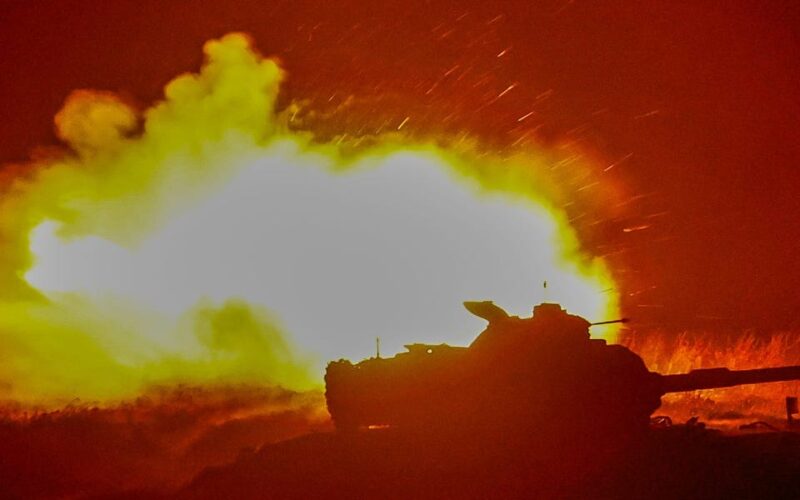- The US considered invading Japanese-occupied Taiwan in World War II.
- Top US commanders decided it would be a high-casualty nightmare.
- Chinese invaders today could face similar challenges.
The US once planned an invasion and seizure of Taiwan that would have been as big as D-Day.
Operation Causeway would send hundreds of thousands of troops, supported by thousands of ships and aircraft, to storm the beaches of the Japanese-occupied territory in 1945.
“Almost certainly, the invasion would have been a horrific spectacle and nightmarish ordeal,” said Ian Easton, an analyst who authored a new study on the invasion for the China Maritime Studies Institute. “Far worse than any battle that was actually fought in the Pacific. The campaign would have been protracted and might have taken six months or even a year.”
The CMSI study makes clear that a US invasion of Taiwan in 1945 — or a Chinese invasion today — would be difficult and risky.
Like many years ago, today’s Taiwan would likely wield Japanese fortifications and tactics to defeat a large Chinese amphibious assault — illustrating the risks and dangers of any attempt to seize the island that Beijing views as a breakaway province.
HUM Images/Universal Images Group via Getty Images
‘A long, drawn-out fight’
The genesis of the planned American invasion — eventually codenamed Operation Causeway — began in the late 1920s as the US Navy and Army crafted a strategy for a potential war with Japan. War Plan Orange envisaged an advance across the Pacific that would culminate with an assault on Taiwan — then called Formosa — which the Japanese Empire annexed from China in 1895 after the First Sino-Japanese War. The plan called for 90,000 Army and Marine personnel to capture Taiwan, which would turn the island into a staging point for an invasion of Japan. By the 1930s, Taiwan was discarded in favor of seizing Okinawa, a smaller objective closer to the four largest Japanese islands.
In 1944, with Japan crumbling and an invasion of the Japanese mainland appearing likely, American planners again eyed Taiwan as an amphibious staging point and a base for B-29 Superfortress strategic bombers. Navy Chief Adm. Ernest King favored the Taiwan option, while Gen. Douglas MacArthur lobbied for an invasion of the Philippines. For a time, “General MacArthur’s return to the Philippines was viewed as a secondary and supporting campaign,” the CMSI study said.
Initial plans called for a 12-division assault in early 1945. But with the European theater receiving priority for American forces, this was scaled down to six divisions (about the size of the initial assault force in the Normandy invasion). The objective would be to occupy southern Taiwan and the mainland Chinese port of Xiamen across the Taiwan Strait.
But this meant subduing a heavily defended island of 14,000 square miles studded with cities, mountains, and forests. The more they studied the challenges, the more worried some senior officers became. Just finding sufficient forces would be a nightmare. “In total, it was believed that a force of 776,913 would be needed for Causeway, including all six divisions of the US Marine Corps, 20 B-29 bomber groups, 41 miscellaneous bomber squadrons, 40 fighter squadrons, and large numbers of naval engineers and logistics support units,” explained the CMSI report.
The biggest flaw in Operation Causeway was an underestimation of Japanese defenses. Intelligence assessments expected a garrison of 90,000 to 170,000 troops. In fact, the Japanese had 275,000 troops, including conscripted Taiwanese natives. They were backed by 20 squadrons of kamikaze aircraft and 600 suicide boats.
The Japanese had anticipated the landings would be in southern Taiwan. They planted 10,000 sea mines, including 5,200 in the Taiwan Strait alone. Mindful of overwhelming American firepower, they built elaborate systems of trenches, bunkers, and tunnels above the beaches and across the island.
“Imperial Japanese and Formosan troops would have conducted a long, drawn-out fight in the cities and mountains,” said Easton. “A guerilla warfare campaign was planned for after the conventional fighting came to an end. Taiwan’s defenders were determined to fight to the bitter end, and the defensive geography, stockpiles, and underground bunkers they had were extraordinary.”
How would a US invasion of Taiwan fare? Other Pacific War battles offer grim clues. When American troops landed in the Philippines in October 1944, they slogged through jungles and mountains in a campaign that still hadn’t ended when Japan surrendered in August 1945. In the April 1945 invasion of the island of Okinawa, US forces suffered 50,000 casualties in two months, as they confronted dense fortifications in hilly terrain, as well as 2,000 kamikaze aircraft attacks that sunk or damaged hundreds of Navy ships.
In the end, the Taiwan idea was abandoned. “From the military view, it was absolutely the right decision,” Easton said. “Professional war planners detested the idea of having to fight on Taiwan, and with good reason.”
AFP via Getty Images
Lessons for China
Even eight decades after the Japanese occupation ended, Taiwan’s military is still influenced by Japanese doctrine, such as the importance of hardening airbases, and how to confront an amphibious invader armed with massive air and naval firepower.
Taiwanese forces still use Japanese-built facilities, including some bunker complexes. Some Taiwanese officers advocate renovating old beach defenses, and preparing for protracted guerilla war as the Japanese did.
China would face these challenges and more in trying to seize Taiwan today.
“Taiwanese military officers pay close attention to history, and especially the history of island warfare, urban warfare, and amphibious warfare,” said Easton. “They have all the defensive benefits that the Imperial Japanese enjoyed and more, thanks to modern weaponry and strong American support.”
Michael Peck is a defense writer whose work has appeared in Forbes, Defense News, Foreign Policy magazine, and other publications. He holds an MA in political science from Rutgers Univ. Follow him on Twitter and LinkedIn.
Source link
lol

